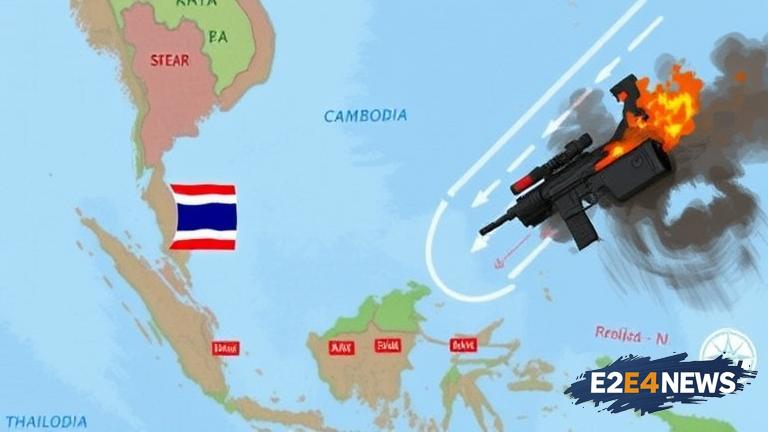The conflict between Thailand and Cambodia has been ongoing for several years, with the two countries disagreeing over the border demarcation. The dispute centers around the 4.6-square-kilometer area surrounding the 11th-century Preah Vihear temple, which is claimed by both countries. The temple, a UNESCO World Heritage site, has been a source of tension between the two nations, with each side accusing the other of encroaching on its territory. The clashes have resulted in the deaths of several soldiers and civilians, and have displaced thousands of people. The situation has been further complicated by the involvement of other countries, including the United States and China, which have offered to mediate the dispute. Despite efforts to resolve the conflict through diplomatic means, the situation remains volatile, with both sides refusing to back down. The Thai government has accused Cambodia of using the dispute as a pretext to stir up nationalist sentiment and distract from domestic issues. Cambodia, on the other hand, has accused Thailand of trying to exert its dominance over the region. The conflict has also had an impact on the local economy, with trade and tourism between the two countries suffering as a result of the tensions. The international community has called for calm and restraint, with the United Nations urging both sides to engage in peaceful dialogue. The Association of Southeast Asian Nations (ASEAN) has also offered to help mediate the dispute. However, with both sides dug in and refusing to compromise, a resolution to the conflict seems unlikely in the near future. The situation is being closely watched by neighboring countries, which are concerned about the potential for the conflict to escalate and draw in other nations. The dispute has also raised questions about the role of the international community in resolving border conflicts, and the need for more effective mechanisms for preventing and resolving such disputes. In recent years, there have been several attempts to resolve the conflict through diplomatic means, including talks between the two countries’ foreign ministers and a meeting between their prime ministers. However, these efforts have been unsuccessful, and the situation remains unresolved. The conflict has also had an impact on the environment, with the fighting causing damage to the surrounding ecosystem. The temple itself has also been damaged, with both sides accusing each other of responsibility. The situation is a complex one, with multiple factors at play, including historical, cultural, and economic considerations. The conflict has also been influenced by domestic politics, with both countries using the dispute to rally nationalist sentiment and distract from domestic issues. Despite the challenges, there are still hopes that a resolution can be found, and that the two countries can find a way to peacefully resolve their differences. The international community will be watching the situation closely, and urging both sides to engage in peaceful dialogue and find a solution that benefits both countries.
